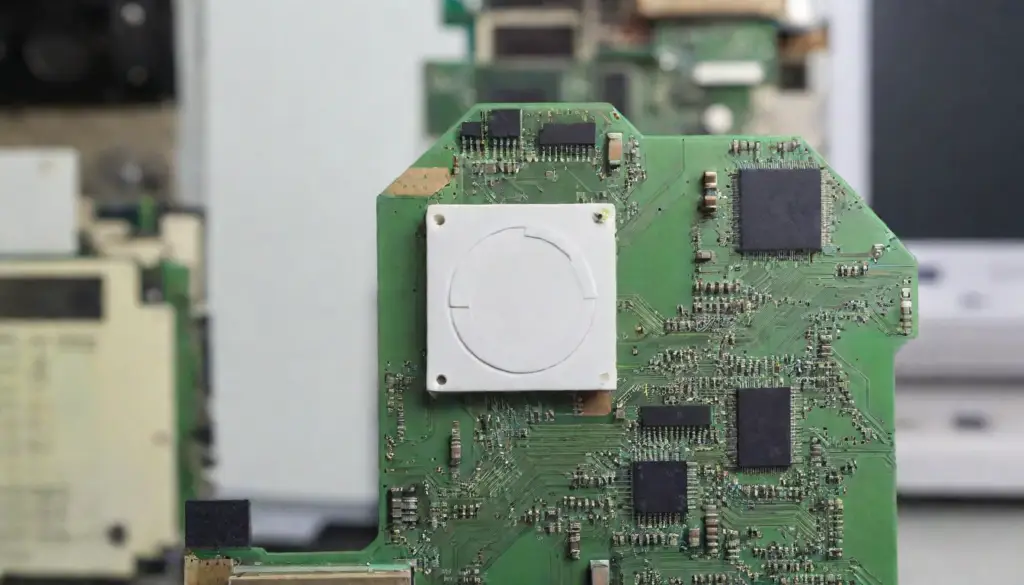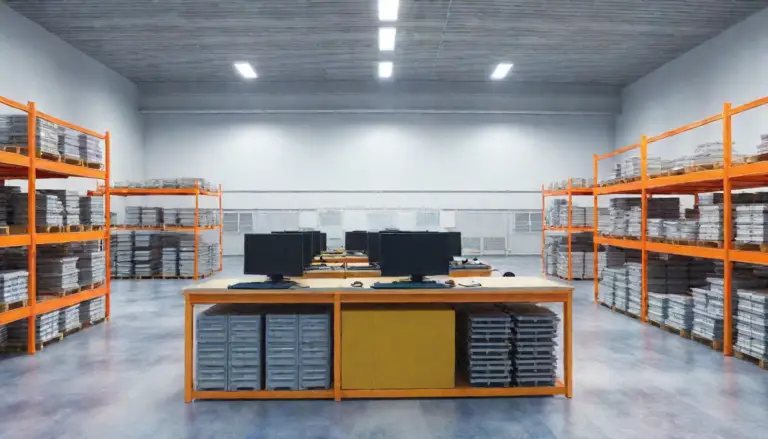Electronic waste, or “e-waste,” includes electronic products like outdated laptops, old phones, fax machines, dead mice, miles of cords, and lonely monitors that are nearing (or past) the end of their “useful life.”
Over the last two decades, the device accruement has dramatically intensified due to factors like built-in obsolescence, the belief that sometimes replacing is cheaper than a repair, or on a corporate level when a device reaches the end of a lease agreement. This increase in electronics consumption has lead to two significant issues: The considerable increase in the mining of the materials needed for production and dramatically growing quantities of electronic waste produced by discarded devices.
The solution for dealing with unused electronic devices has been a growing problem in the U.S.—and globally. For a household, a smoke detector with a faulty battery or a dead cellphone is a nuisance. In corporate offices with phones on every desk and workstations upgrading yearly, it can become a nightmare that’s easy to ignore – until it’s not. Old tech creates problems of space and storage, data security, and environmental harm. However, a growing number of specialized electronics recycling companies have become certified in the proper disposal of this equipment, providing a much-needed service across all industries.
Here are ten useful facts about e-waste and electronics recycling to help you navigate how and why you should recycle.
1. E-waste is toxic.
E-waste contains hazardous components such as mercury, lead, cadmium, polybrominated flame retardants, barium, lithium, and polyvinyl chloride. If not properly recycled, these hazardous materials can contaminate groundwater.
2. Most e-waste ends up in landfills and incinerators.
In 2012 alone, the U.S. generated 3.4 million tons of e-waste – with only 29% recycled. That 29% was the equivalent of approximately 50,000 dump trucks-worth of electronics that made it to recycling.
3. E-waste accounts for 70% of toxic waste.
Although e-waste only makes up 2% of the trash in U.S. landfills, it comprises 70% of the overall toxic waste.
4. E-waste can create security issues.
Whether on a hard drive, memory card, flash drive, SIM card – or in any other form – most electronics hold some personal information. In the hands of cybercriminals, this information is a goldmine of potential value. According to the annual report from IBM Security and the Ponemon Institute, the global average total cost of a data breach in 2020 was $3.86 million.
5. Some e-waste is reusable.
Particularly at the corporate level, although a device might be at the end of its useful life for your organization, it could be useful to someone else. This is a significant opportunity in the lifecycle of a product. After all, if you can reuse an item, you are saving space in a landfill, and no new resources will be committed to a newly manufactured product. Quality, certified e-waste recyclers will recognize items that can qualify for refurbishment and reselling.
6. E-waste is virtually 100% recyclable.
Devices are disassembled into their parts and processed for use as raw materials in new products. Non-renewable materials such as lead, cadmium, mercury, lithium, manganese, nickel, and zinc can be recycled an infinite number of times and have real commercial value. Glass, copper, plastics, metals, and precious metals are sent through further processing for eventual reuse. Depending on the type, plastic can be made into shipping pallets or e-wood for outdoor furniture or play equipment. Manufacturers can extract lithium from old phones and make batteries can into new batteries. Printer toner can be used as an additive in recycled road surfaces, and the ink can be reused as 100% recycled ink.
7. E-waste recycling creates jobs.
Recycling computers alone can create an estimated 296 new jobs each year for every 10,000 tons of computer waste that gets processed. The e-waste recycling industry is growing and creating hundreds of thousands of new jobs across the globe.
8. E-waste contains precious metals.
For example, for every million cell phones recycled, 35 thousand pounds of copper, 772 pounds of silver, 75 pounds of gold, and 33 pounds of palladium can be recovered.
9. Manufacturers and retailers of electronics are beginning to offer more solutions to e-waste recycling.
In 2018, Apple introduced Daisy, a robot that can pull apart 200 recycled cell phones an hour, or 1.2 million per year. Daisy herself was created with recycled parts from “Liam,” her robot predecessor. Retailers such as Best Buy, HP, and Verizon will accept electronics recycling no matter where you bought them.
10. E-waste recycling can be easy, even on a corporate level.
Certified e-Steward® recycling partners can make it just as easy for your business – whether two people or 20,000 – to recycle e-waste as it is to recycle paper. And when you partner with a certified e-Steward, you can trust that they work within the highest legal and ethical global standards.




